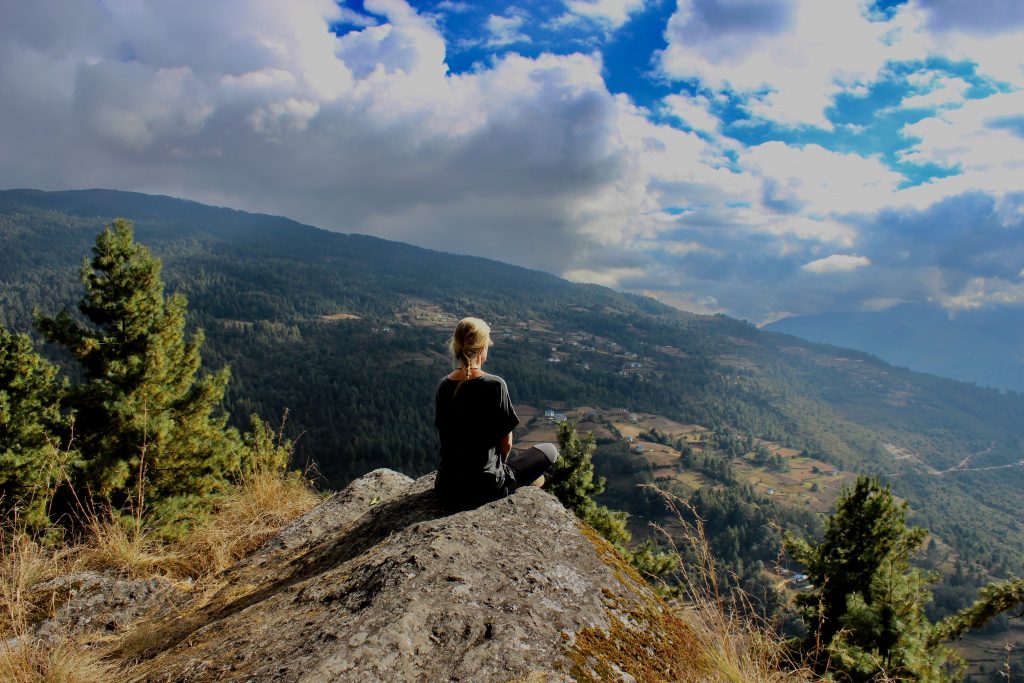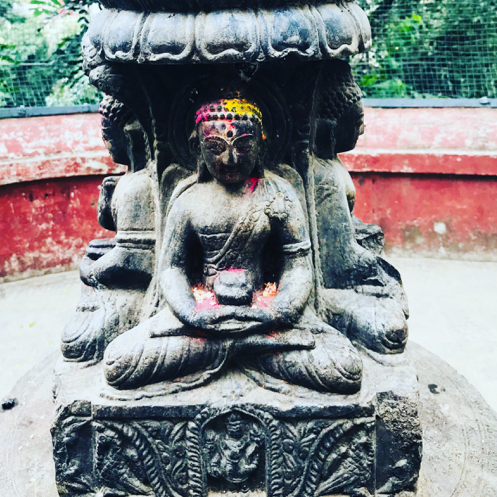There is nothing religious about the practice of meditation, in fact – there is nothing even Buddhist about it! The Tibetan word for meditation is སྒོམ་ (gom) which translates to ‘become familiar’ or ‘to habituate’. The reasoning behind meditation practice is to become more familiar with one’s mind as it is. Meditation is a ‘tried, tested, and true’ introspective process, where one first cultivates stability of the mind, and then one further investigates the nature of mind or awareness. The practice of meditation is simply a tool designed to bring one’s mind back to a place of natural, naked awareness, to a place of basic space – where the layers of confusion and self-deception are striped away – in this way, the meditation practitioner becomes familiar with their own unfabricated, non-conceptual, and innate basic goodness.
Shamatha (Sanskrit), or calm/peaceful abiding, is simply a technique in which to uncover all the layers of hope, fear, grasping, and judgement that are all such strong habits which cloud the mind. With shamatha practice the mind becomes workable or malleable, we learn to come back to ourselves, to become familiar with the groundless and raw quality of our mind and reality – only then does the world of egolessness or non-duality become possible.
The What and the Why:
The How – Meditation Instructions:
- Dzongsar Jamyang Khyentse Rinpoche:
Just sit. Nothing else.
“If we have ambitions, we have fixations toward whatever we are aiming for—even if our aim is enlightenment. Then there is no meditation because we are thinking about it, we are craving for it, we are fantasizing about it, imagining things. That is not meditation.This is why a very, very important characteristic of shamatha meditation is to let go of any goal and simply sit for the sake of sitting. Here we breathe in and out and we just watch that. Nothing else. It doesn’t matter if we get enlightenment or not, or if our friends get enlightened faster than us. Who cares? We are just breathing. We just sit straight and watch the breath in and out. Nothing else.
We let go of obsessions toward aims and ambitions. This is a very important aspect. This includes even the perfection of the shamatha meditation, trying to do a perfect shamatha meditation. Even that we should get rid of. Just sit.”
The above quote is taken from the article ‘Introduction to Shamatha Meditation, A Guided Introduction to Shamatha Meditation’ by Dzongsar Jamyang Khyentse Rinpoche. This article is a transcript of a teaching that DJKR gave at Vajradhara Gompa in Kyogle, NSW, Australia in 1999
- Chogyam Trungpa Rinpoche:
This teaching is one of six from a course on meditation which Trungpa Rinpoche gave in 1974 during the inauguration of The Naropa Insitute in Boulder, Colorado, USA (the first ever accredited Buddhist University in North America). Click here for the rest of the teachings in this series
The Dathun Letter is a letter where Chogyam Trungpa Rinpoche addresses his students who would partake in a dathun. A dathun is a one month long group meditation retreat (shamatha meditation in particular) which Trungpa Rinpoche introduced in 1973 and recommended to all of his students. Click here for The Dathun Letter in full.
“The shamatha style of meditation is particularly recommended by the Buddha. It has been the way for beginning meditators for 2,500 years. To describe meditation we could use the phrase touch and go. You are in contact, you’re touching the experience of being there, actually being there-—and then you let go. That applies to awareness of your breath on the cushion and also beyond that, to your day-to-day living awareness. The point of touch and go is that there is a sense of feel. The point of touch is that there is a sense of existence, that you are who you are.”
Taken from Chogyam Trungpa Rinpoche’s The Dathun Letter
The Who and the Where are up to you!
It is traditionally recommended that one choses a quiet, solitary, and remote location to develop meditation. In this day and age, remote may not be possible, but it will definitely help to practice in a quiet place where one will not be disturbed. Picking a place and time that can work with your daily schedule is also helpful in developing a new habit. It is said that it takes one month to develop a new habit – so don’t expect everything to easily fall into place – it will definitely take some effort to develop a daily meditation practice.

Other Teachings:
Happy meditation practice from all of us at Himalayan Hermitage!

Share this on:
Extra behind-the-scenes bonus features:
Meditation & Pilgrimage – Why do Either?*
*Warning: This is the only article/resource on here NOT written by a meditation master
Subscribe to our monthly newsletter: